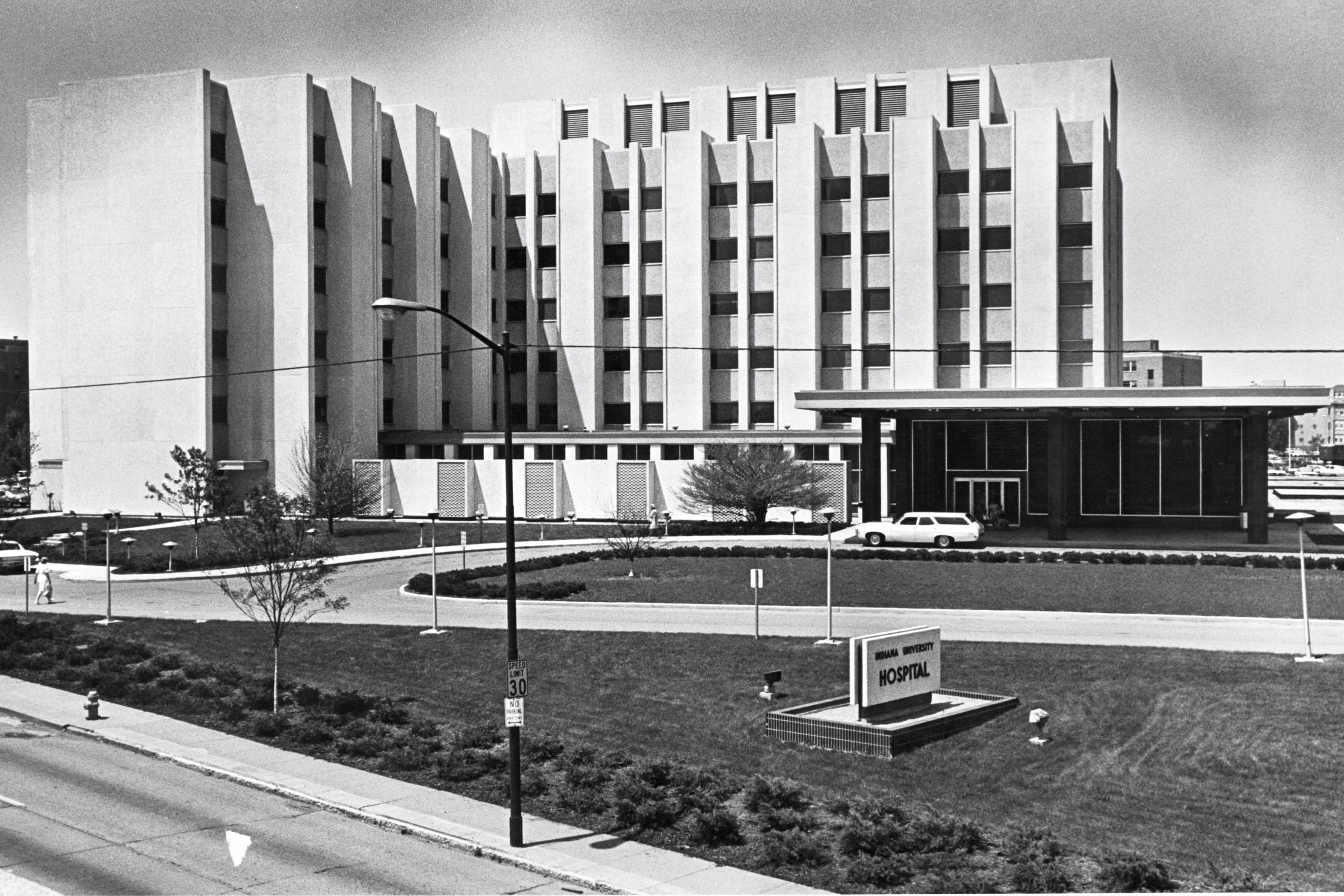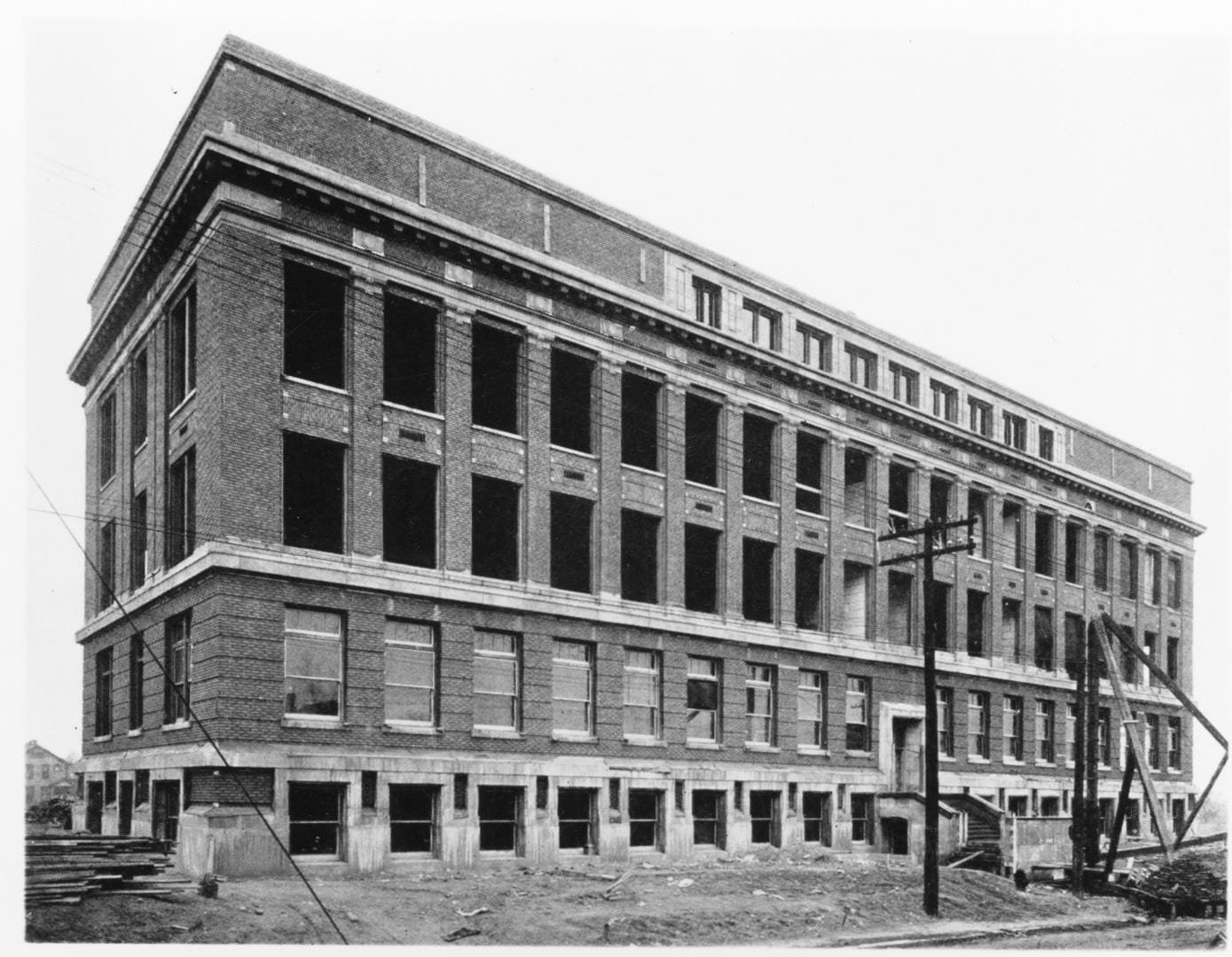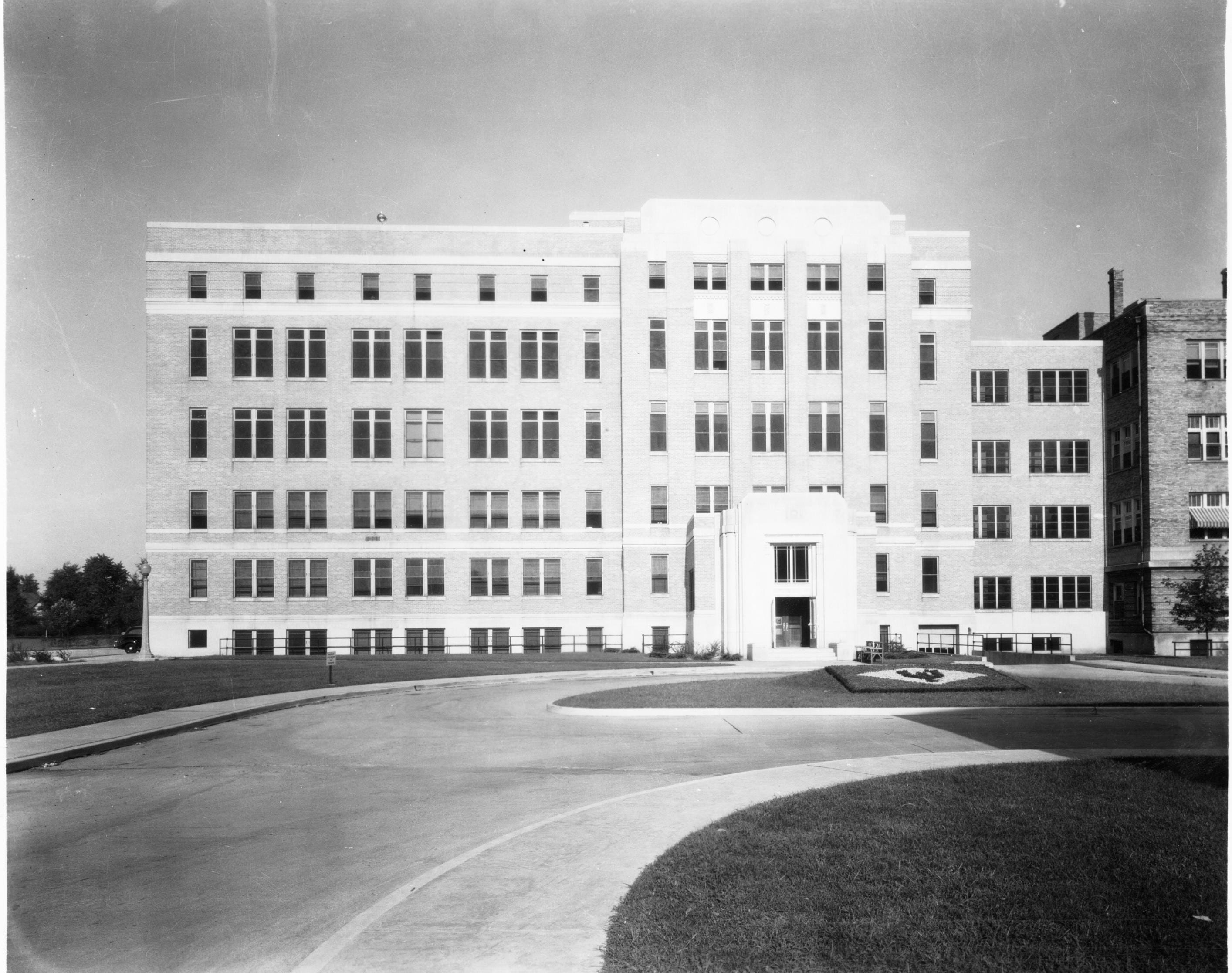Opened: 1938
From the moment it opened, demand for beds at Long Hospital exceeded supply, prompting long wait lists. Meanwhile, clinical services became decentralized and spread out among Long, Riley Hospital for Children, and Coleman Hospital for Women.
By the early 1930s, the school desperately needed a way to consolidate them. Federal funds from the Public Works Administration paid for the construction of the Clinical Building, a six-story structure attached to the rear of Long Hospital.
When it opened in May 1938, the facility quickly became a "nerve center" for clinical departments and housed administrative operations. Among the most important was IU's burgeoning cancer clinic, which took up an entire floor and offered radiation and X-ray treatments.
The building also housed six operating rooms, physical and occupational therapy facilities, and a transitional space for patients from Riley. Its top floor featured rooms used to house interns and residents, which continued until 1953. In 2010, it was renamed in honor of Willis D. Gatch, who was dean at the time of its construction.



